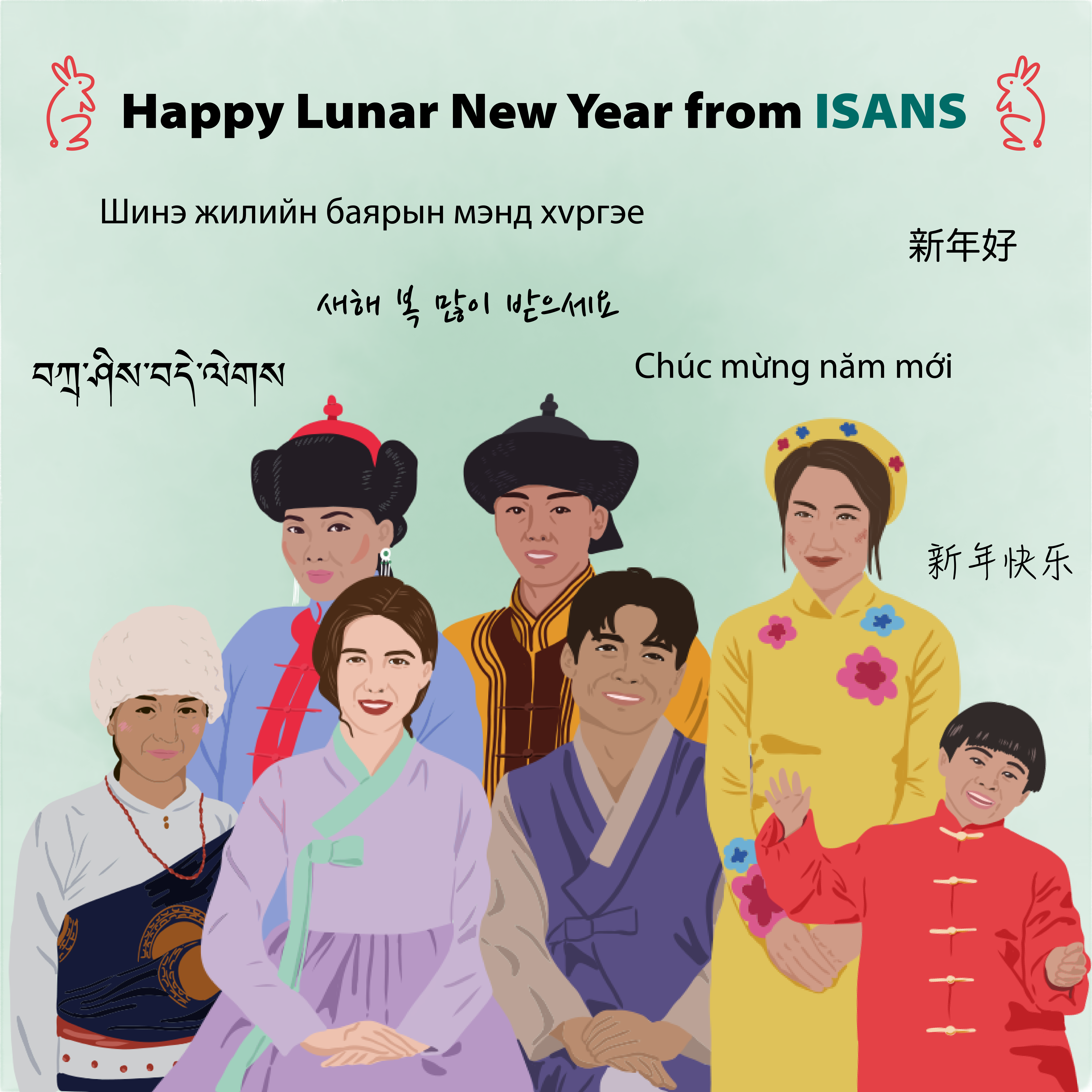Happy Lunar New Year from ISANS

The Lunar New Year is one of the most important holidays for billions of people around the world. In China, Korea, Vietnam, Mongolia, Tibet, and many Asian countries and diasporas worldwide, Lunar New Year is a special time to bring friends and family together for feasting and festivities.
Each country and culture celebrate in their own unique and various ways while sharing similar themes and traditions, such as celebrating the arrival of spring, visiting family members to see out the old year, and having dinner together. Children play traditional games, and elders prepare gifts or cash in an envelope.
Here are some fun facts:
- From late January to mid-February, Mongolia celebrates its new year, Tsagaan Sar. The holiday's name means White (Tsagaan) Moon (Sar) and dates back to the 13th century. As the name says, white is important, so the colour can be seen in clothing and food during the holiday period.
- During Vietnamese Tet, it is believed that the first person visiting the house determines the host's fortune for the whole year. To ensure good luck for the house, the selected "first foot" is typically required to have zodiac signs compatible with the host.
- A red pocket or red envelop contains 压岁钱 (yā suì qián) in China, which translates to "money to anchor the year" or "lucky money." By giving children money, elders wish them a year of good fortune and blessings. Sometimes the younger generation gives their red envelope of money to their elders to wish them longevity and show their gratitude. The colour red is seen often during this time as it brings good luck.
- Tibetan New Year Losar is set according to the lunisolar Tibetan calendar and normally corresponds to a date in February or March of the western Gregorian calendar. Losar festival can last around 15 days.
- While various foods make up the Korean New Year Seollal (설날) feast, ddeokguk (rice cake soup) is a staple. The dish carries special significance, and children are especially excited to eat ddeokguk (떡국): consuming a bowl marks a person's Lunar Calendar birthday, which means they officially turn one year older. Children sometimes try to grow more than one year by eating multiple bowls of ddeokguk.
For those celebrating, Happy Lunar New Year!